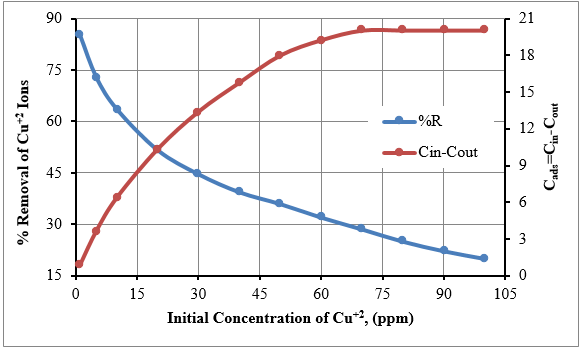Modelling and Simulation for the use of Natural Waste to Purified Contaminated Heavy Metals
Keywords:
Adsorption, copper, used tea leaves, ZRL, isothermal, kinetic and thermodynamicAbstract
The possibility of recovering one of the famous heavy metal ions, divalent copper, from contaminated aqueous solutions (which simulates wastewater) was studied in this study. The removal method was adsorption technique using a laboratory batch-mode unit, while the used tea leaves were the adsorption media. The adsorption process was performed under various operating conditions and ranges that simulate the natural environmental conditions to determine the ideal values that achieve the maximum removal of copper ions. The acquired results demonstrated that the maximum remediation efficiency was 85%, which was achieved at treatment time, shaking speed, initial concentration, temperature, acid function, and adsorption dose of 90 min, 250 rpm, 70 ppm, 25°C, 4, 4.5 g, respectively. The values of the thermodynamic properties demonstrated that adsorption is spontaneous, exothermic and has negative entropy, while adsorption follows Langmuir’s model and the second pseudo-model according to the isotherm and kinetic studies, respectively. To conduct the Zero Residues Level concept, the loaded used tea leaves were prepared to study it effect as a simple type of rodenticide by applying it to Sprague Dawley rats. The results of the test show that the effectiveness of utilizing the residues as rodenticide and the LD50 of the proposed rodenticide were identical to those mentioned in the literature. Based on these results, the current study sheds light on the possibility of converting used tea leaves from harmful solid waste to an environmentally friendly substance using it as an effective adsorbent medium for the treatment of water polluted with heavy metals.

Published
How to Cite
Issue
Section
Copyright (c) 2022 Suha Ibrahim Salih Al-Ali, Zaidun Naji Abudi, Mohammed Nsaif Abbas

This work is licensed under a Creative Commons Attribution 4.0 International License.







